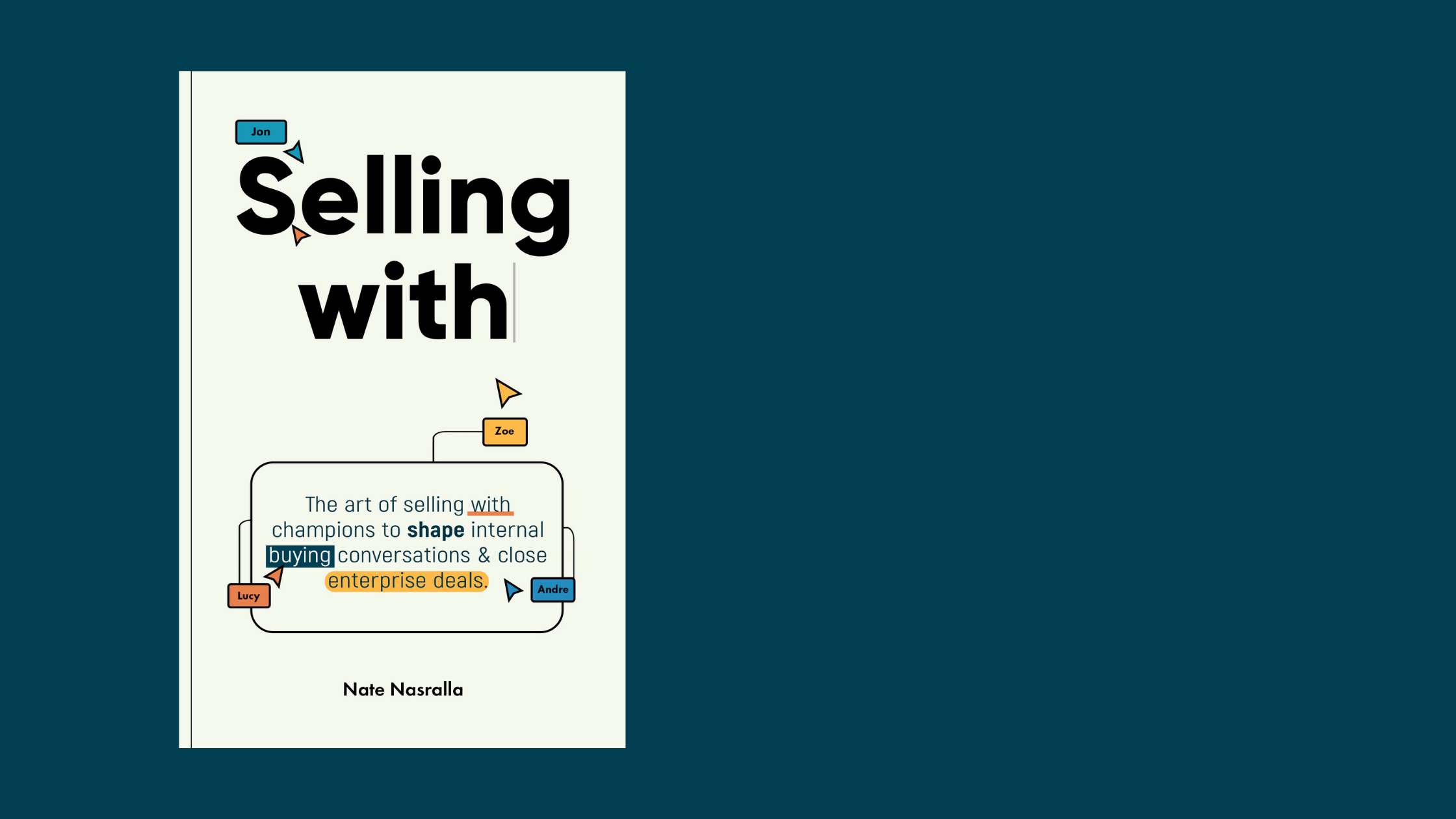How to Run QBR’s That Aren’t a Massive Waste of Time
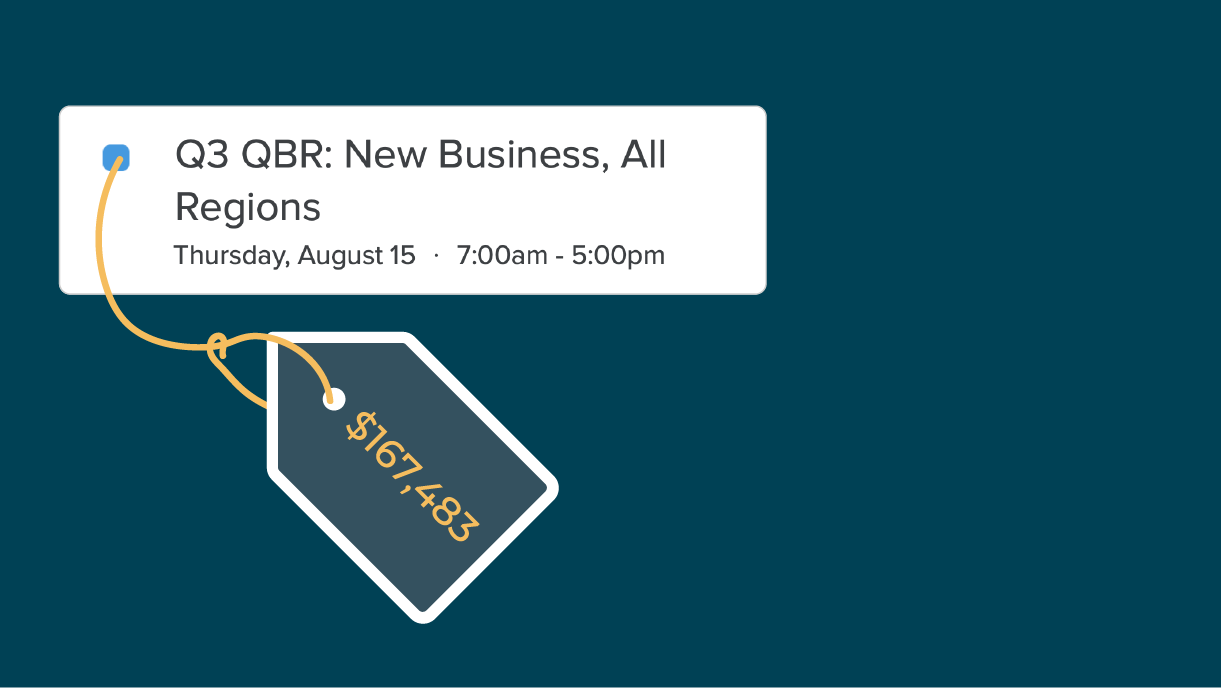

Sales team QBR’s are incredibly expensive to run.
And based on how most teams run them, they’re often a waste.
It’s kind of like this (a spinoff from this concept.)

When you add up the cost of pulling reps and leaders from the field — who are often among the most expensive resources in the company — you’ve got to be pretty certain of two things:
- Every hour of that QBR is truly necessary. You can’t cover everything in less time.
- Sellers will gain something that leads to specific deals closing, that wouldn’t otherwise.
I mean, just think about the last QBR you were at:
Were both of those points true?
Or did that QBR feel more like an overcrowded audit that went something like:
CRO: “So, bring us through this deal. It’s a big one this quarter.”
AE: rambles through some play-by-play commentary
VP Sales: says something equally designed to impress CRO
AE: not sure what to say, wanders through more details
Manager: defends AE so this doesn’t reflect poorly on them
CRO: answers emails, looks up, puts things back on track “Okay okay okay. So when we meeting their exec?”
AE: another 3 to 12 minutes of semi-relevant context
CRO: goes back to email
VP Sales: “Make sure you’re selling value, not features.”
Manager: “Wow, 90 minutes already, we should wrap up huh?
Now, obviously, I’m exaggerating a little. But it probably not too far off from some QBR’s you’ve been part of.
Here’s a story, and an alternative agenda, for how QBR’s should go.
QBR’s that are actually worth the time and money.
Last month, I flew out to join one of our customer’s QBR’s.
Their VP Sales, Christian, asked if I could join them on-site. It was their first since making a pretty big change in their process:
Deals can’t move past Stage 3 without a documented business case, built with the customer.
(More on that, here.)
A simple executive summary focused on the headlines, edited by the buying team.
I slid into the back of the room around 9:00am, two hours after their official start time, after a morning flight in from Denver.
They had booked a full day at the Hilton, and holed themselves up inside a conference room with extra tall ceilings, and a crystal chandelier that, somehow, still looked way too big for the room.
I was standing next to a table lined with dozens of those fancy Voss water bottles. Almost like the hotel staff knew a steady stream of sellers were about to sweat through 20oz of water an hour while getting grilled on each deal, so we’d need plenty of them.
“How’s it going so far?” I whispered to Christian.
He had seen me slip in, and left his seat to stand next to me.
“Surprisingly well,” he said.
Which got my attention. “What do you mean?” I asked.
“We’re already done with four reps. I thought we’d be running over on the second right now.”
“Why’s that?” I smiled. I already had a fairly good idea why.
I’ll detail what Christian shared below, and how you can make your QBR’s suck less.
But first, here’s the end of this QBR story:
They wrapped up around 2:30pm — way ahead of schedule — so they all went to the driving range for the rest of the afternoon, while I caught an early flight back to Denver.
(I’ll take getting home to dinner with my daughter any day.)
Your Next QBR Agenda
The key to running a QBR like this is the big point I referenced earlier:
Christian’s team already had their QBR prep done just by running their sales process.
There wasn’t anything extra to create.
Because your business case is your deal.
It has the majority of what sales leaders need to know, and can clearly read in ~1 minute.
It’s one page that captures the “evidence” of what’s actually happening inside the buying team — and what’s not. Who’s involved in the deal? Which business priority are you attached to? And how deep have you gone in discovery?
Here’s how Christian approached it, and you can too:
Pre-QBR Prep
- Christian sent a Google Drive link with sub-folders with each rep’s name out 1 week early.
- Reps saved PDF’s of business cases they were working on inside Fluint to their folder.
(Note: we also add this content to your CRM, so you can make a report vs. folders like this.)
- Leadership scanned the deals that were most interesting on the plane ride over.
- Reps self-scored deal based on their business case scorecard to find gaps.
- Reps prepped with 3 “asks” to make of the GTM team.
During the QBR
The team prioritized deals for discussion based on:
- High-value contracts with low deal scores.
- Late-stage contracts with any deal score.
- High-scoring deals others should learn from.
Reps started off which a quick summary statement, like this:
Summary: I’ve closed $_____ quarter-to-date, compared to quota of $_______.
Including this, I’m expecting to end with:
Worst Case: $, if [conditions for this scenario].
Base Case: $, if [conditions for this scenario].
Best Case: $______, if [conditions for this scenario].
Deals in that first category are often the difference between a seller’s best case vs. base case.
So, that’s where the discussion started. Which went something like this:
- Leaders spent a minute re-reading the business case.
- They asked clarifying questions for more context as needed.
- Reps moved into their asks:
e.g. “This is a rip-and-replace, and the customer’s nervous about a second failed rollout. I need CS / prof services time in a meeting on < Date > to join me and…” - Leaders would spend a meeting actually executing on that ask.
e.g. email a CS leader, “Hey, we need to prioritize some support for < Rep > next week, they’ll send a calendar invite — here’s the doc with context.” - They’d move to the next.
Compare & Contrast Two Different Deals
When you pick up a business case, you can get pretty clear signal on topics like the “Big 3.”
→ Names, numbers, and dates.
Which are part of the overall scorecard, and will tell you with reasonable certainty if a deal’s on track. For example:
- Do we have a written problem statement built with the buying team’s own numbers?
- Do we have multiple comments / edits from the buying team, confirming our POV?
- Did the buying team exec fund a project or internal initiative to do something?
Do we know that internal project name and team? - Did the project team set a specific go-live date that, if missed, means a worse outcome?
Here’s an example of what I mean.
Let’s say you pull up the business case behind deal #1, and it looks like this:

What does that tell you about the deal?
Now, let’s say you pull up a doc like this. What does it tell you?
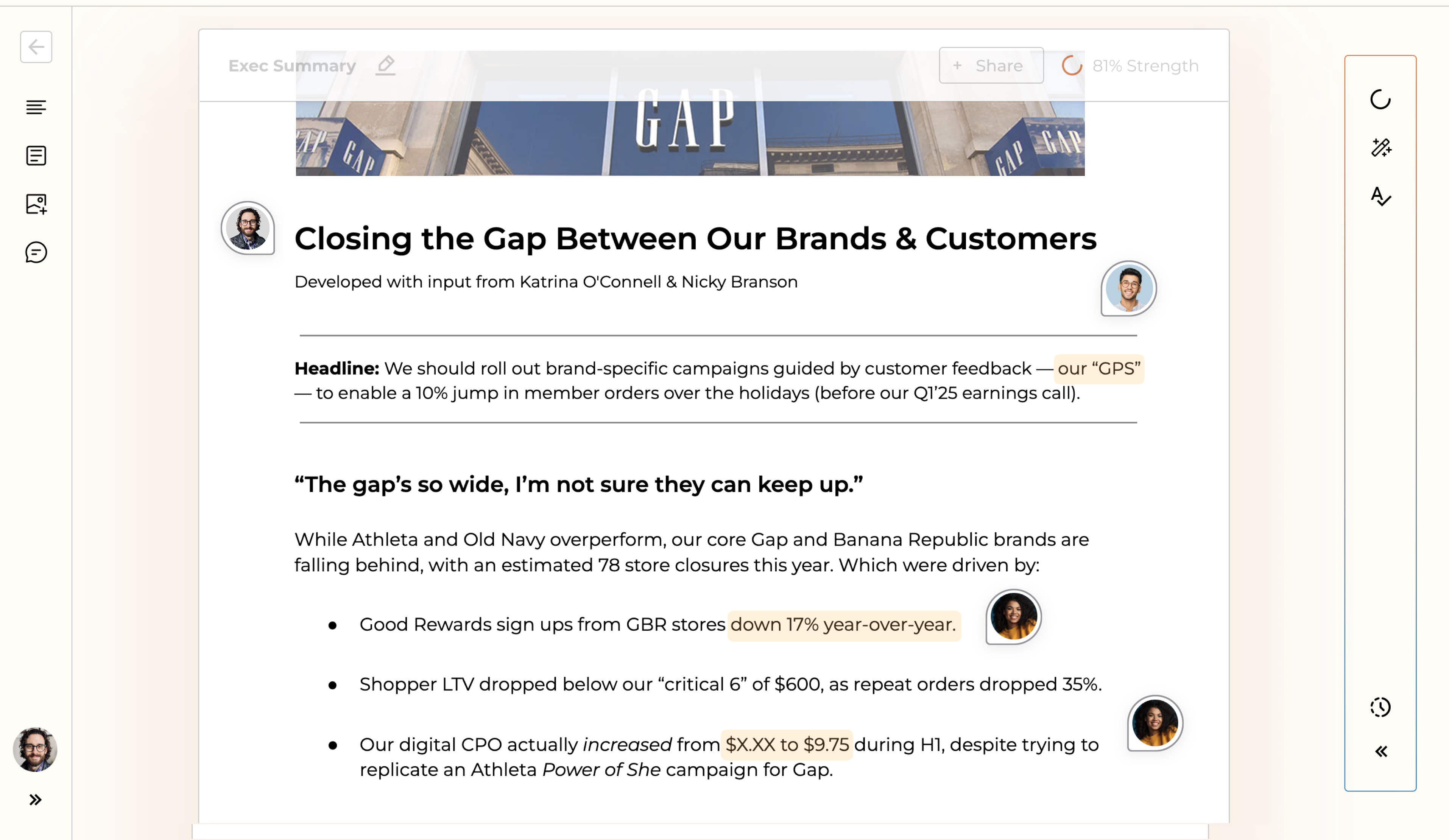
You can see:
- A sharp headline tied back to the customer’s internal priority.
- A quote setting up the issue from a comment on a recent investor call.
- A POV on the fact certain brands in the Gap portfolio are underperforming, with detailed numbers from inside the buying team.
- Open questions labeled with X’s, waiting for more input from the buying team.
How are you feeling about that deal?
This is the big difference between the typical QBR, and how you could be running QBR’s. By designing a sales process that creates written “evidence” of where the deal’s at:

And just to be clear:
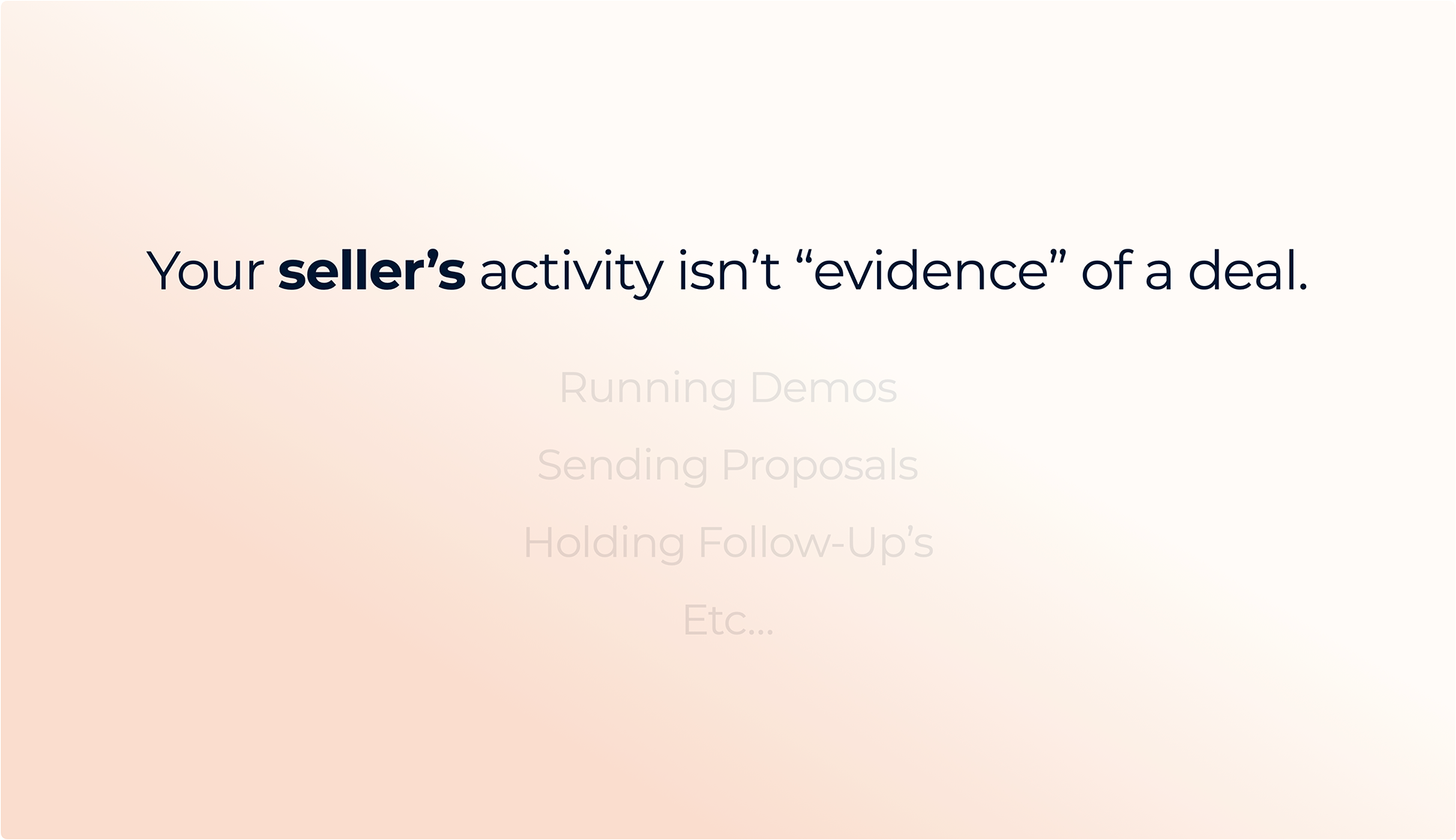
If you’d like to explore making this shift, here’s a shortlist of resources to help out:
FAQ's on:
Why stop now?
You’re on a roll. Keep reading related write-up’s:
Draft with one click, go from DIY, to done-with-you AI
Get an executive-ready business case in seconds, built with your buyer's words and our AI.
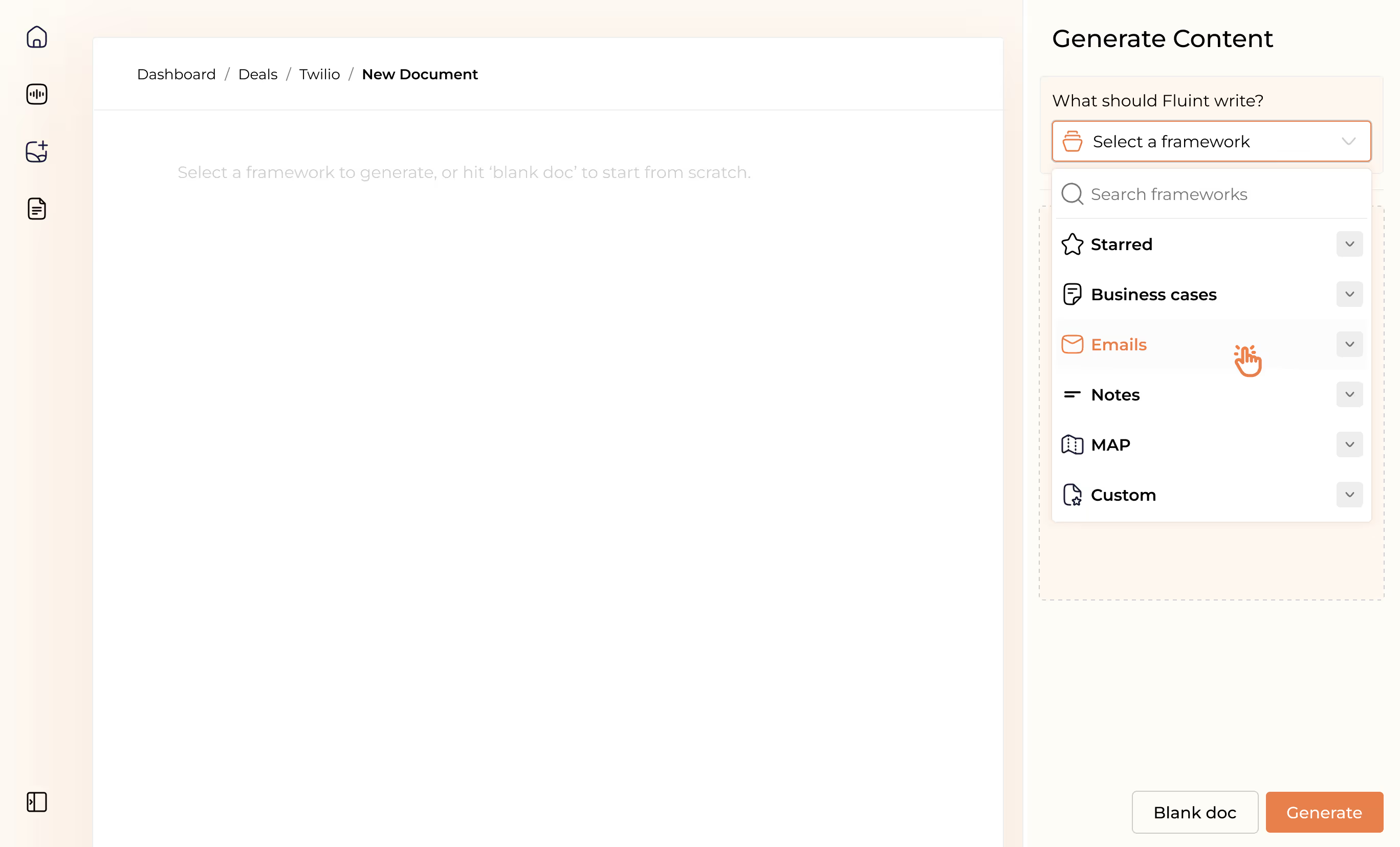
Meet the sellers simplifying complex deals
Loved by top performers from 500+ companies with over $250M in closed-won revenue, across 19,900 deals managed with Fluint

Now getting more call transcripts into the tool so I can do more of that 1-click goodness.



The buying team literally skipped entire steps in the decision process after seeing our champion lay out the value for them.


Which is what Fluint lets me do: enable my champions, by making it easy for them to sell what matters to them and impacts their role.






